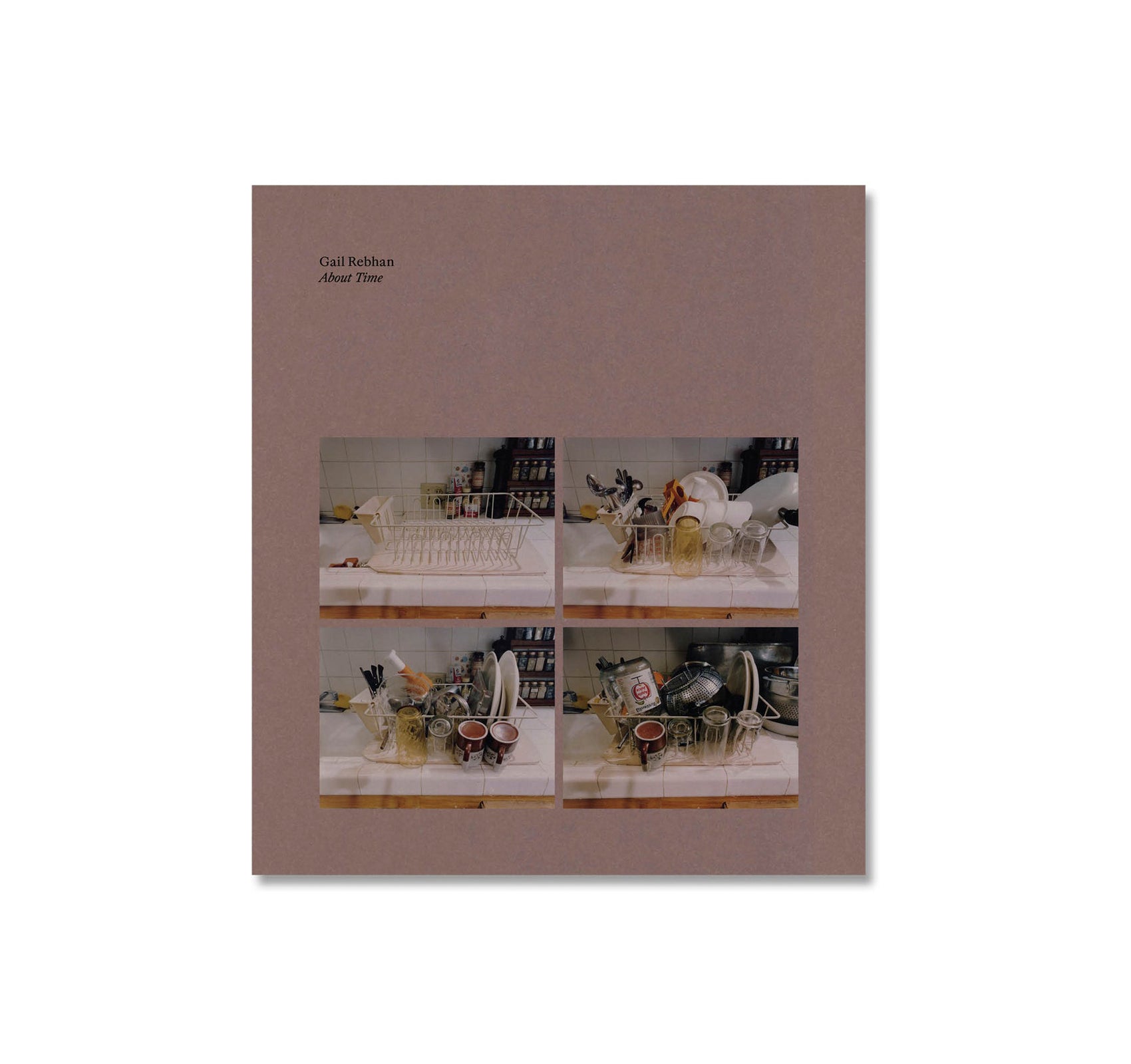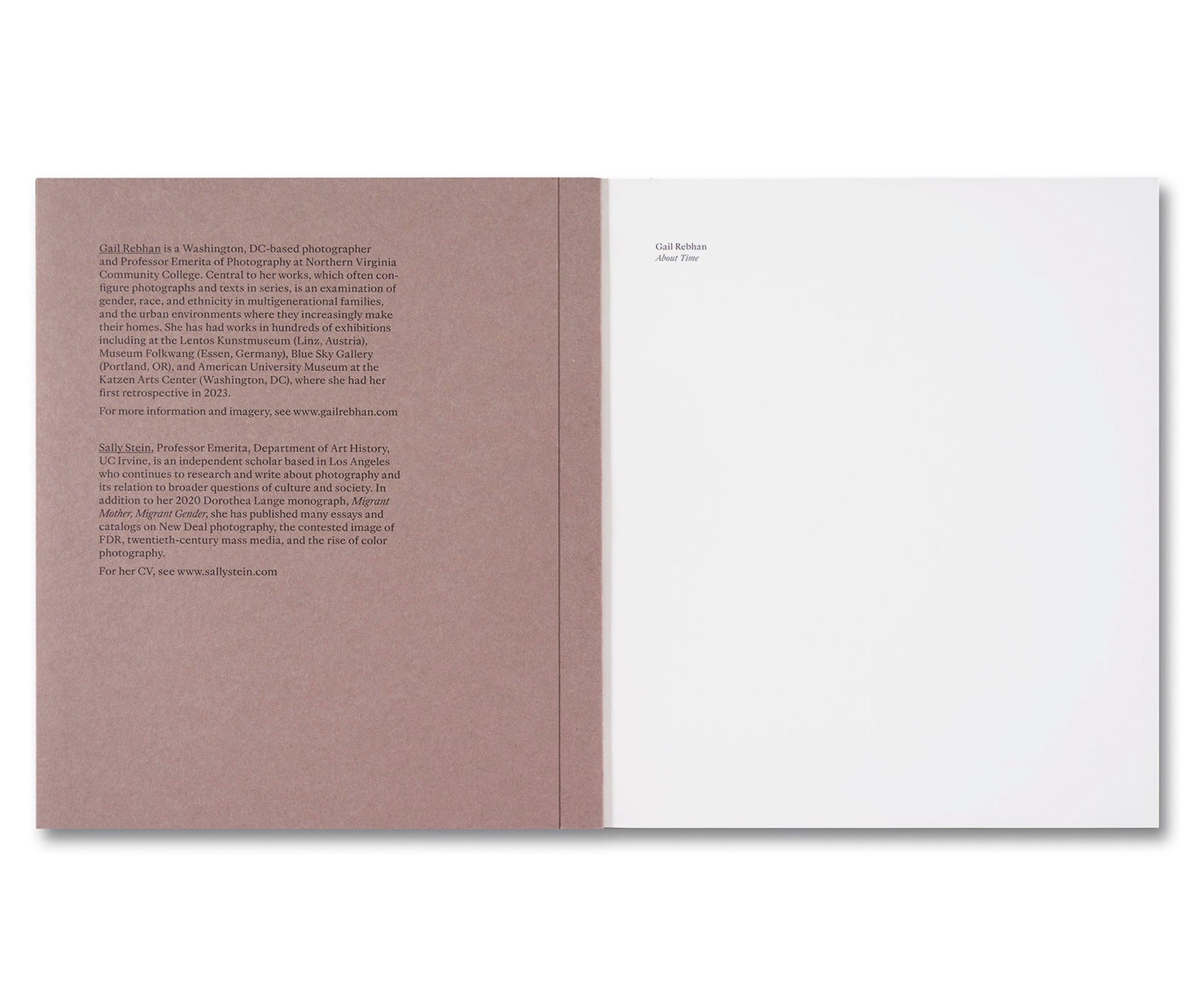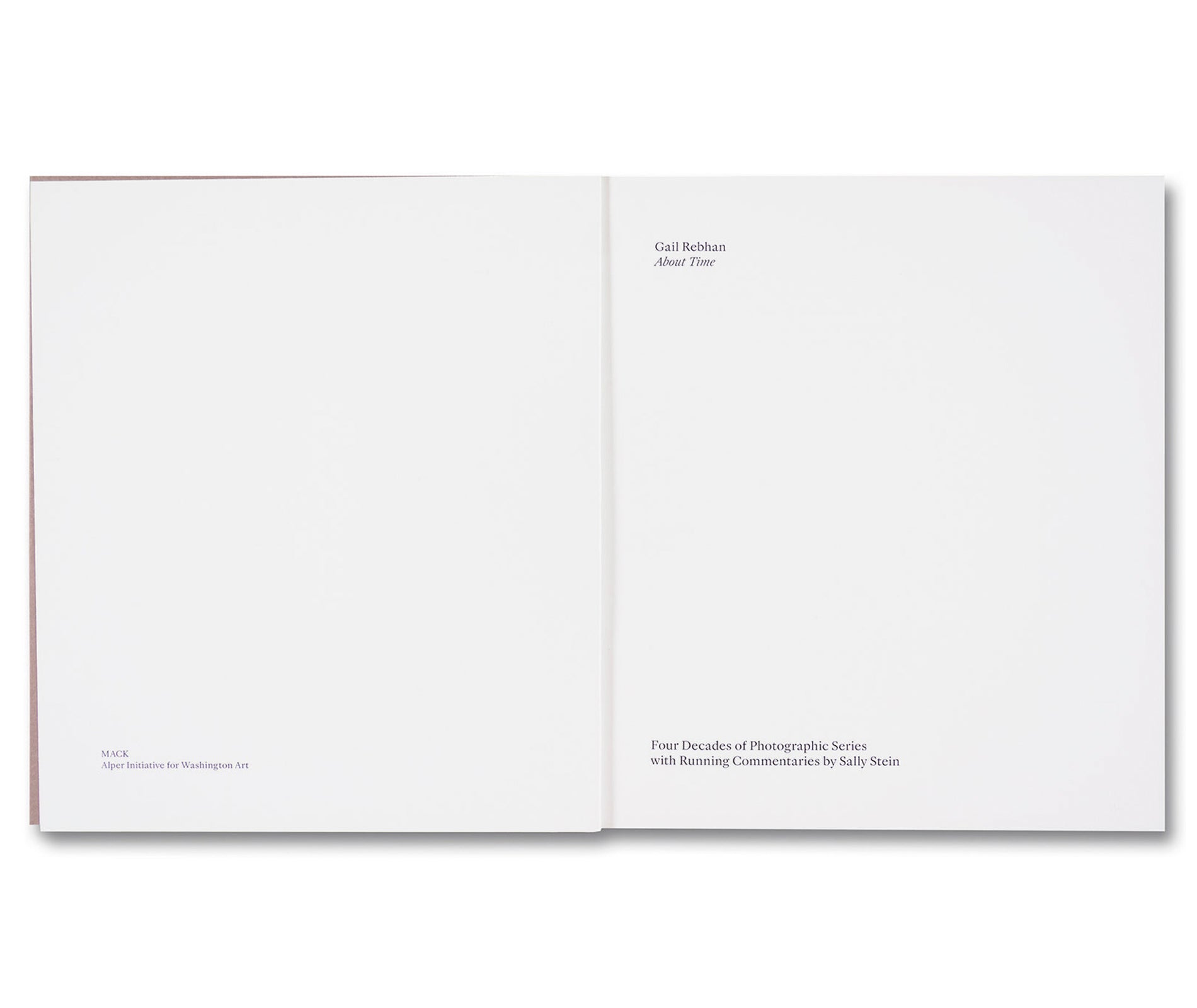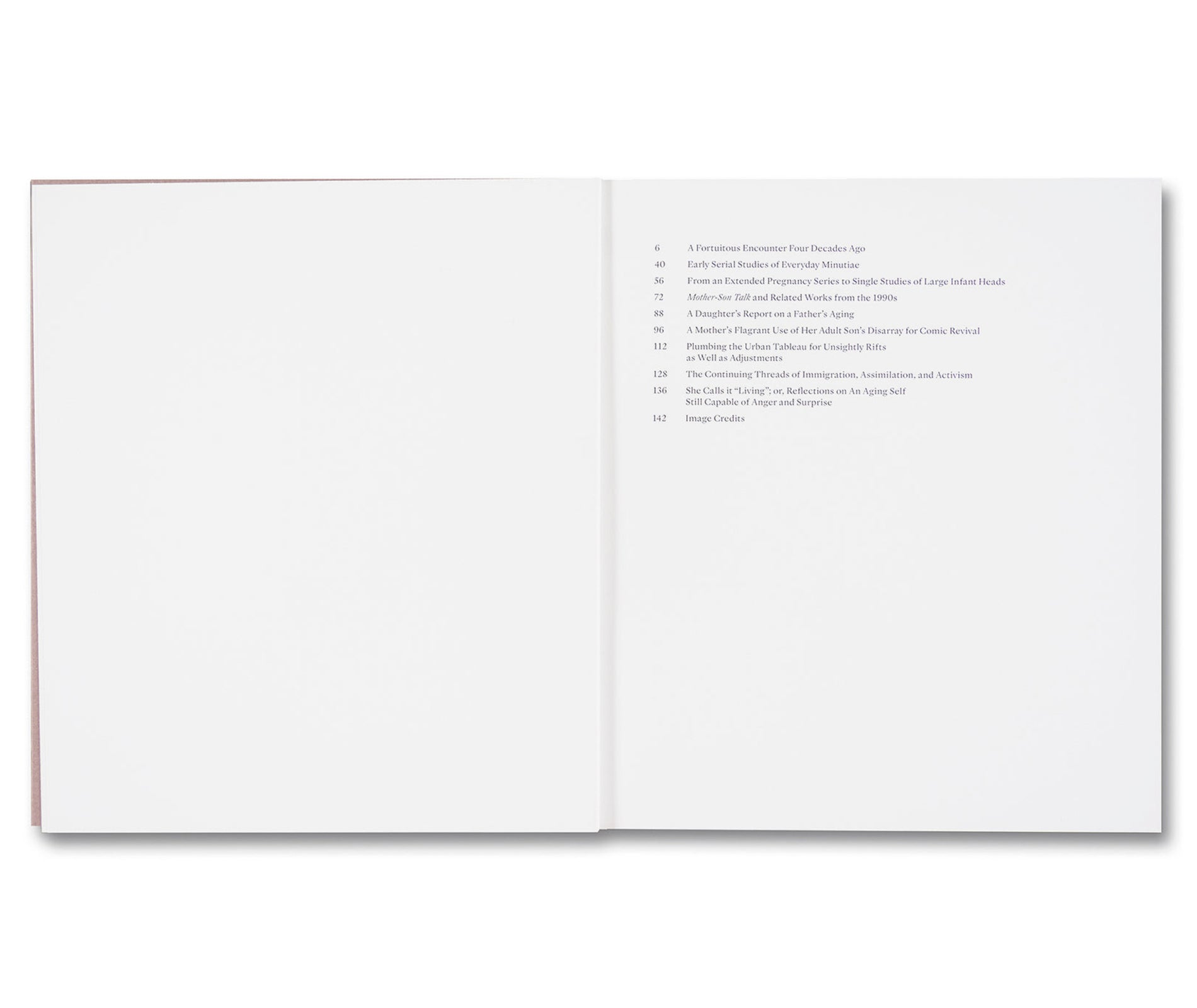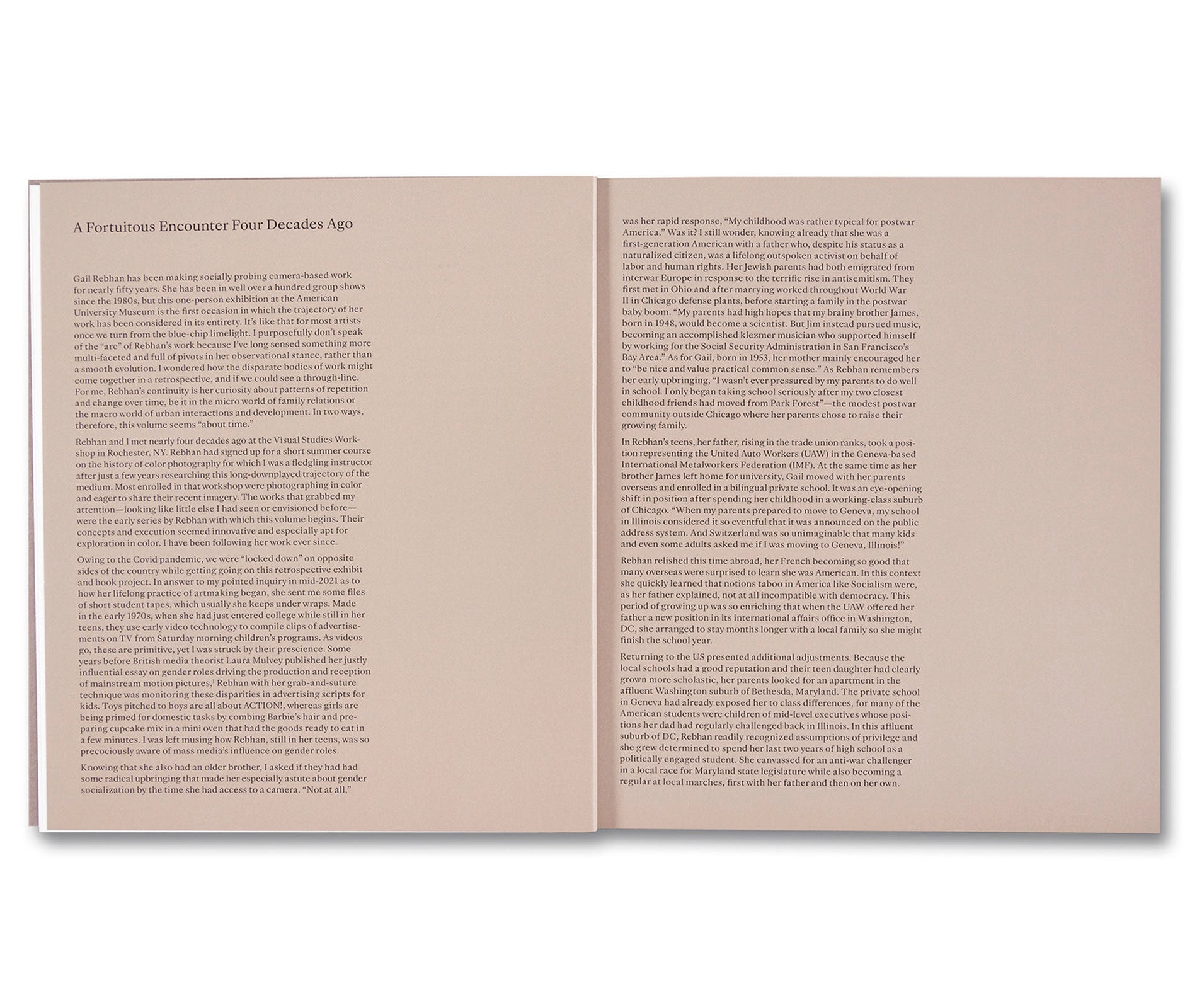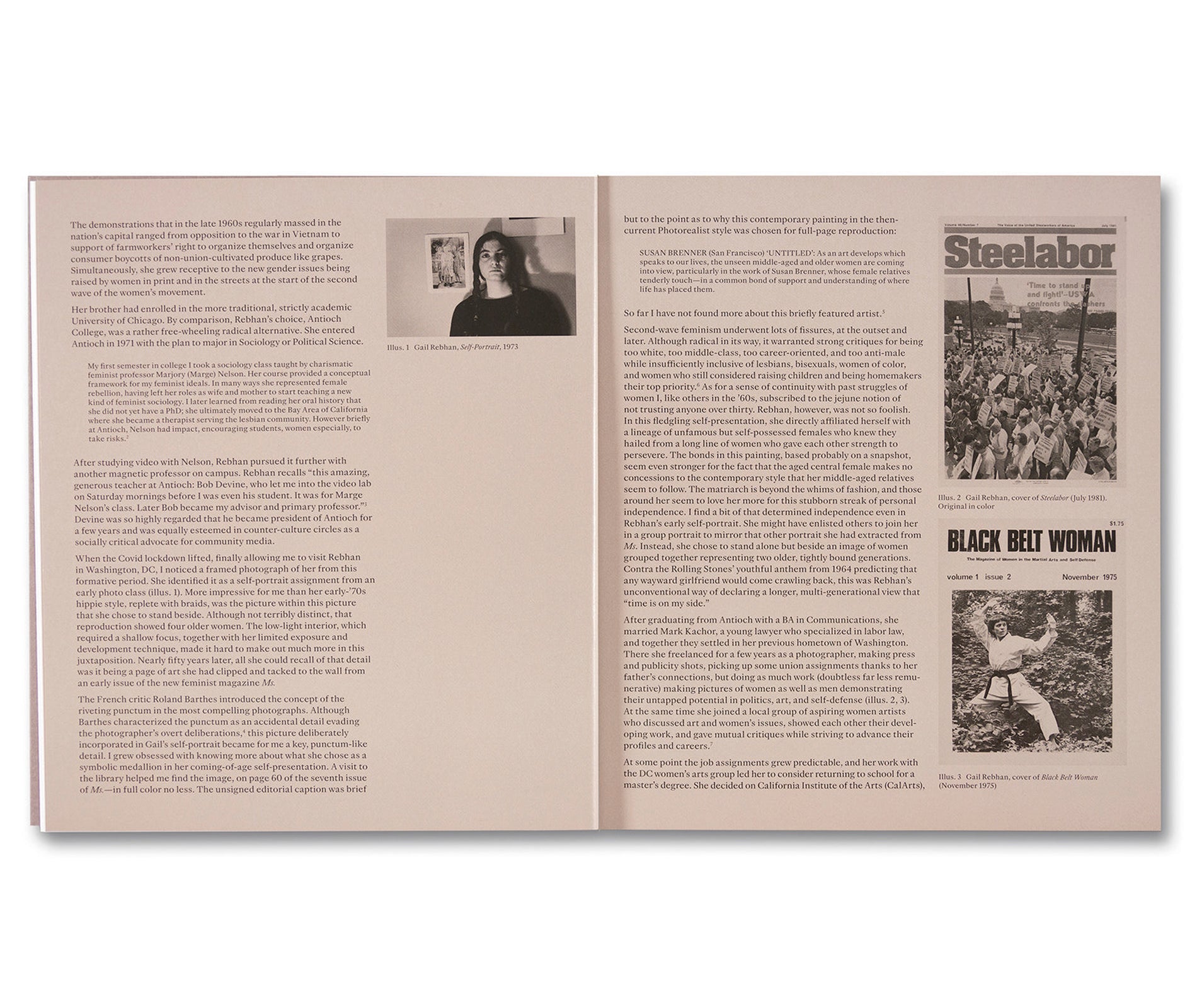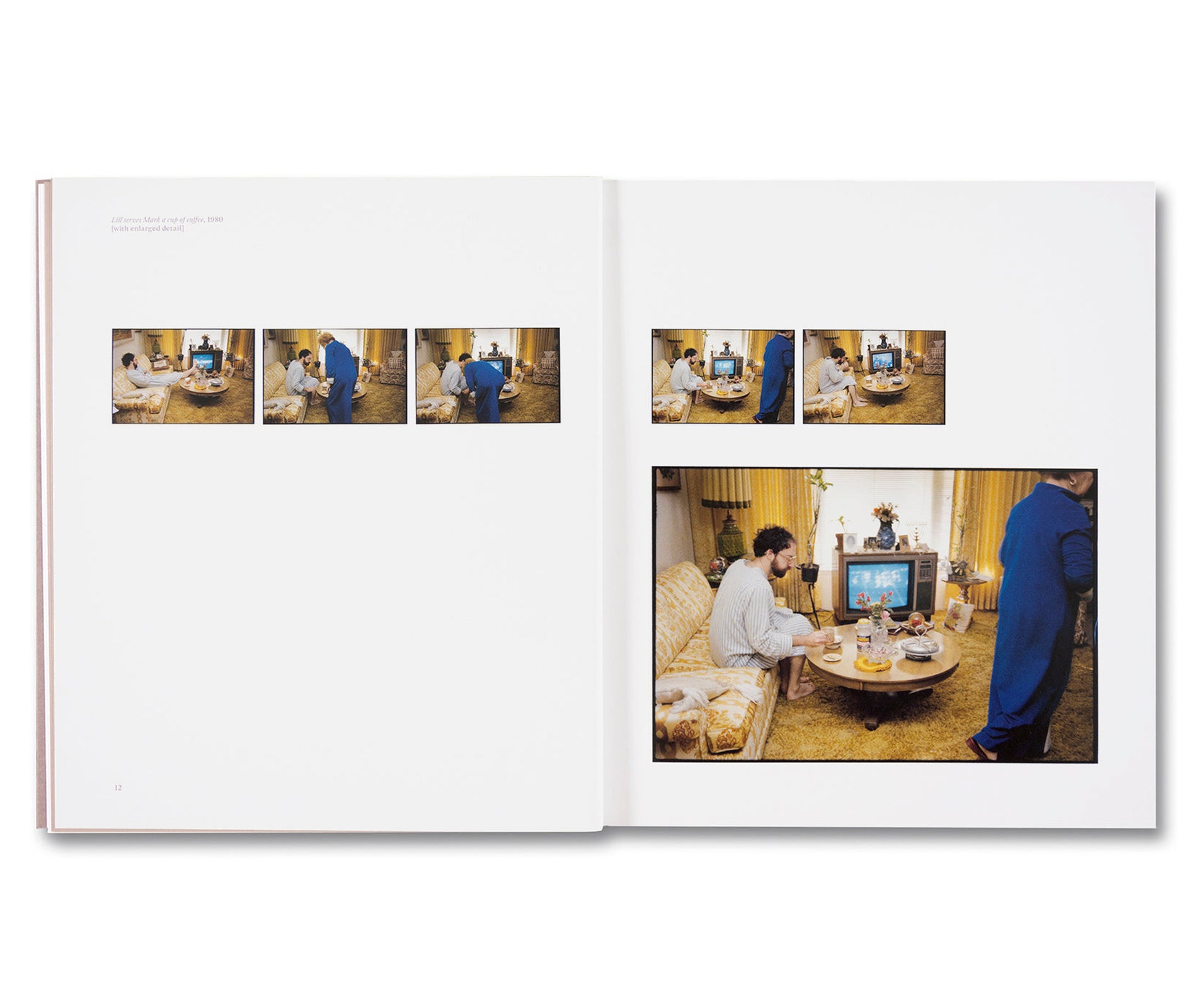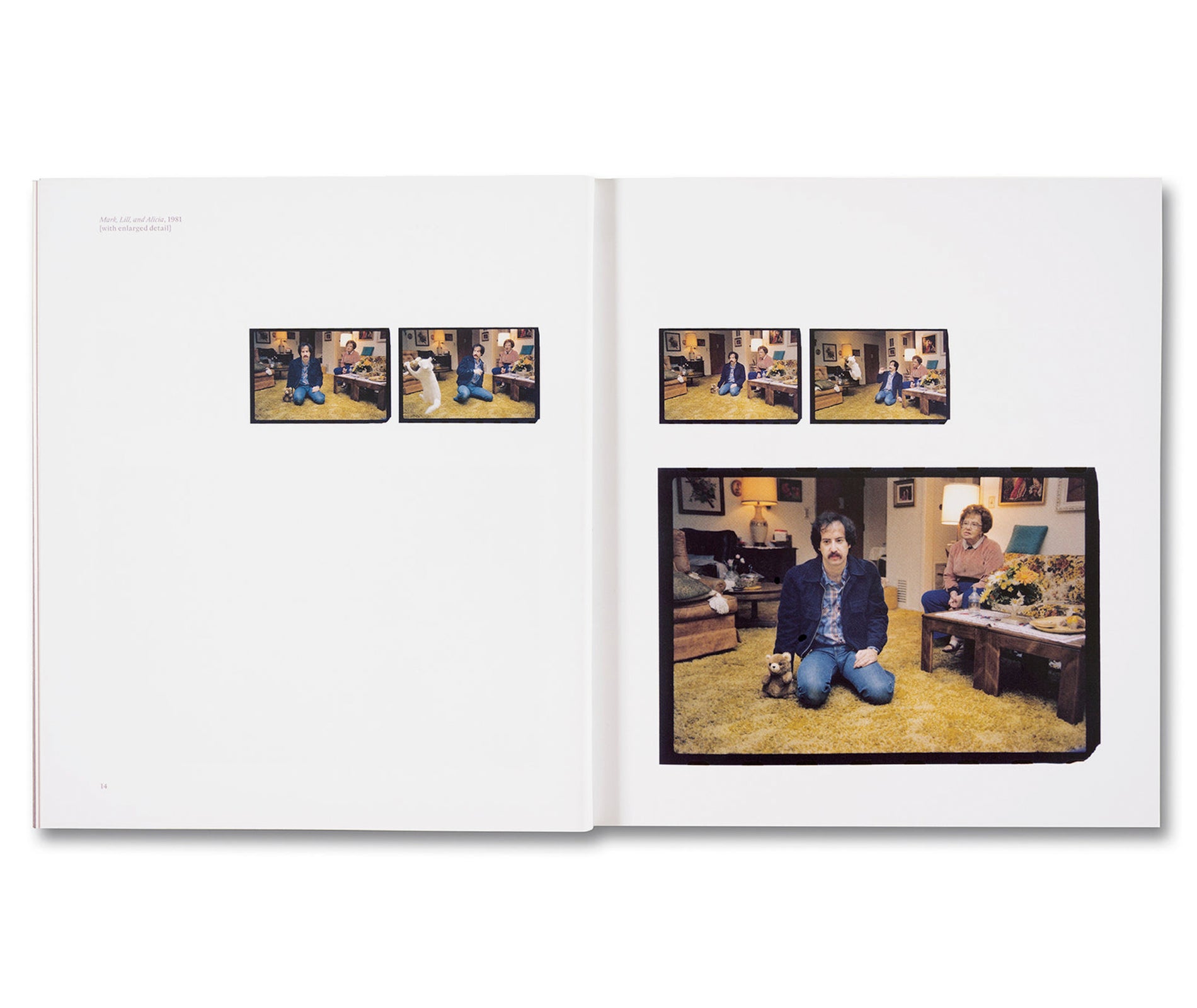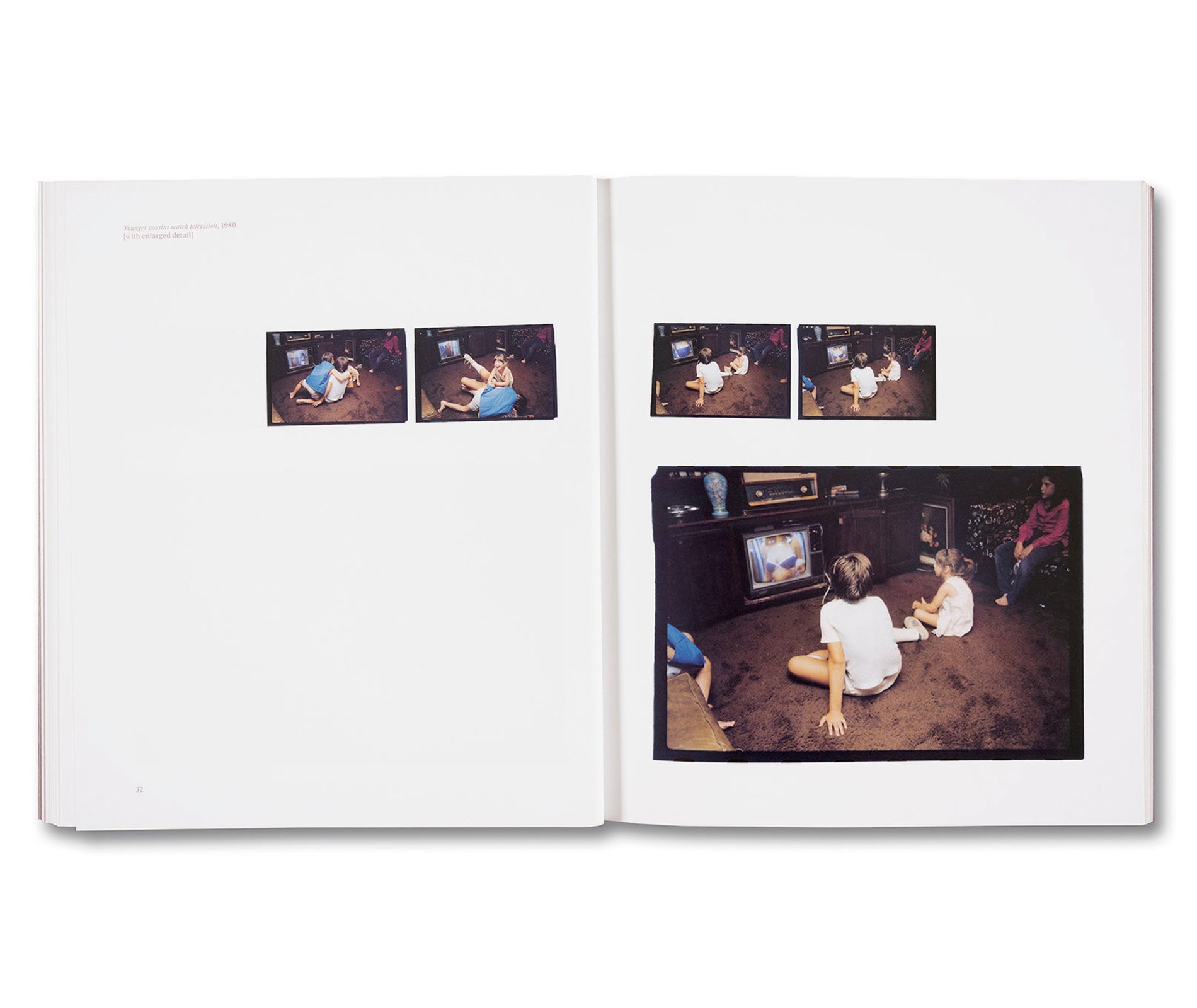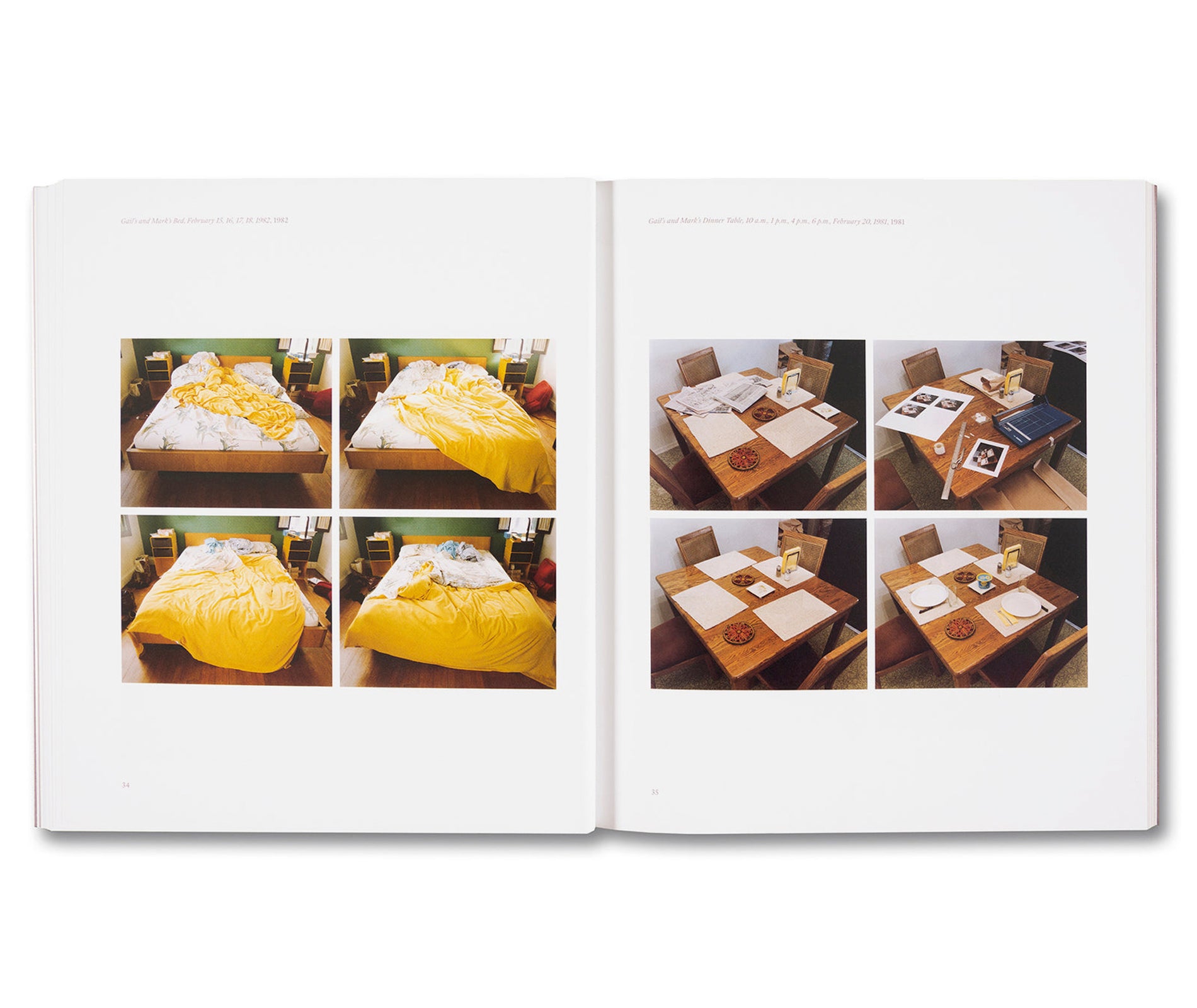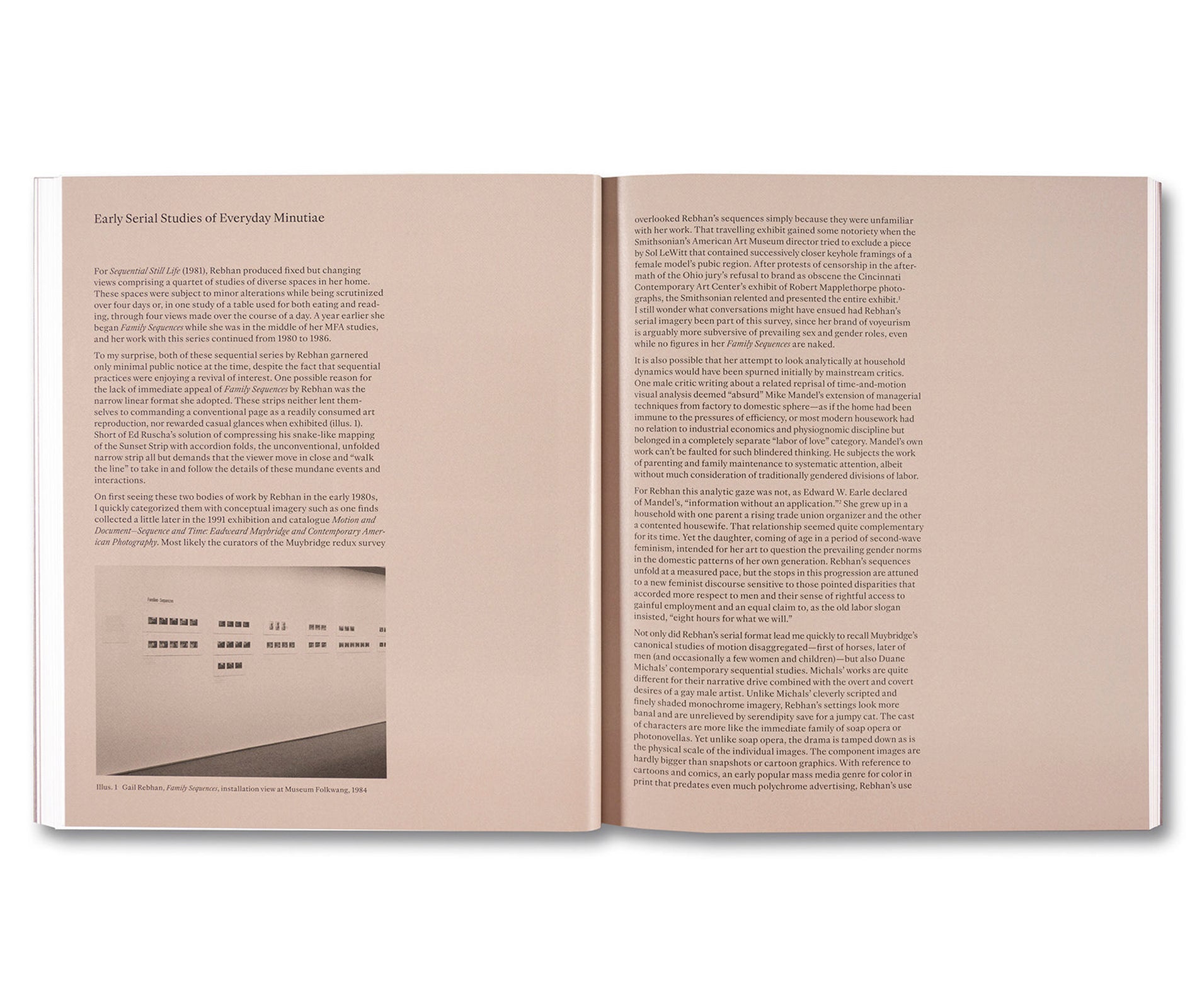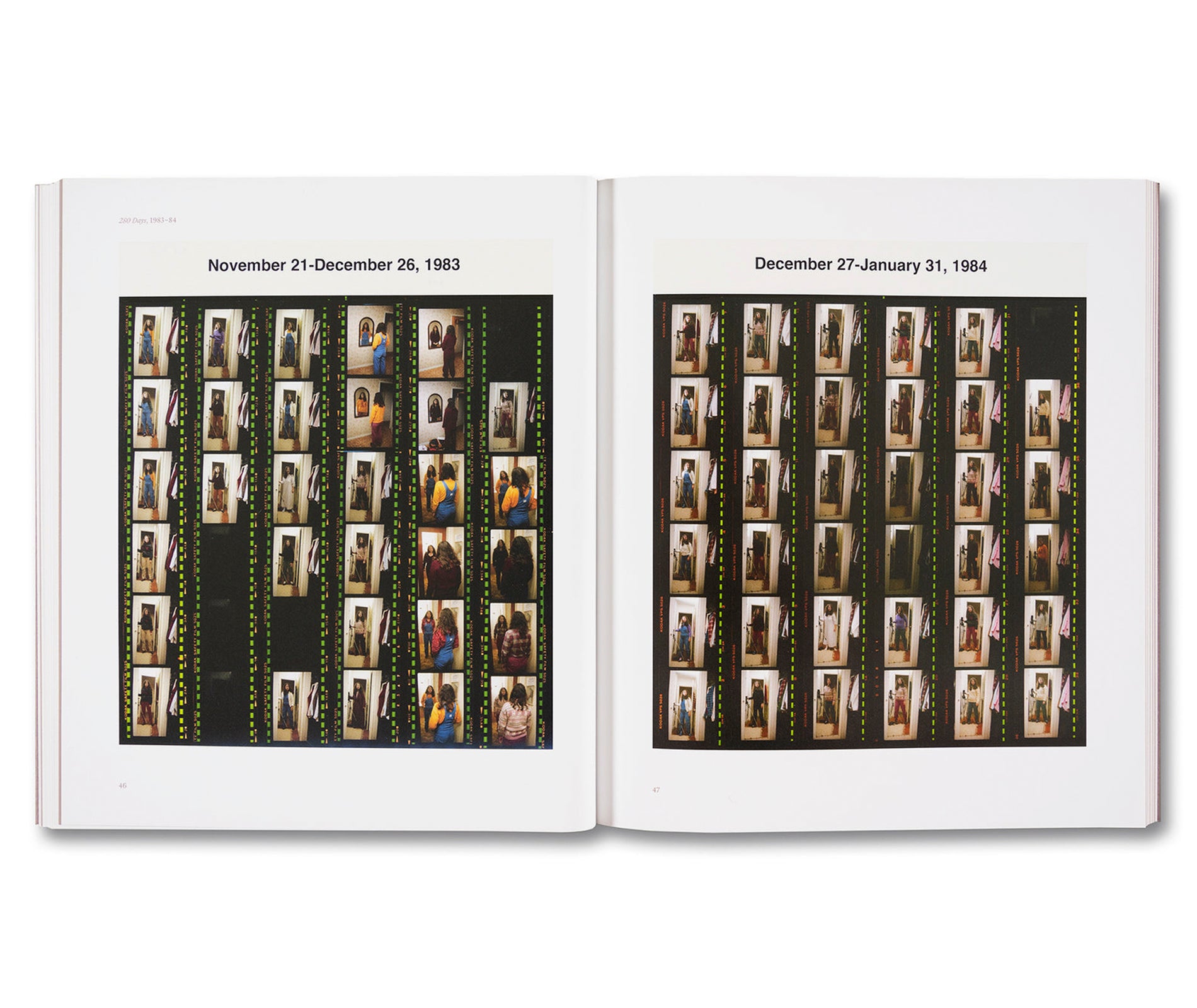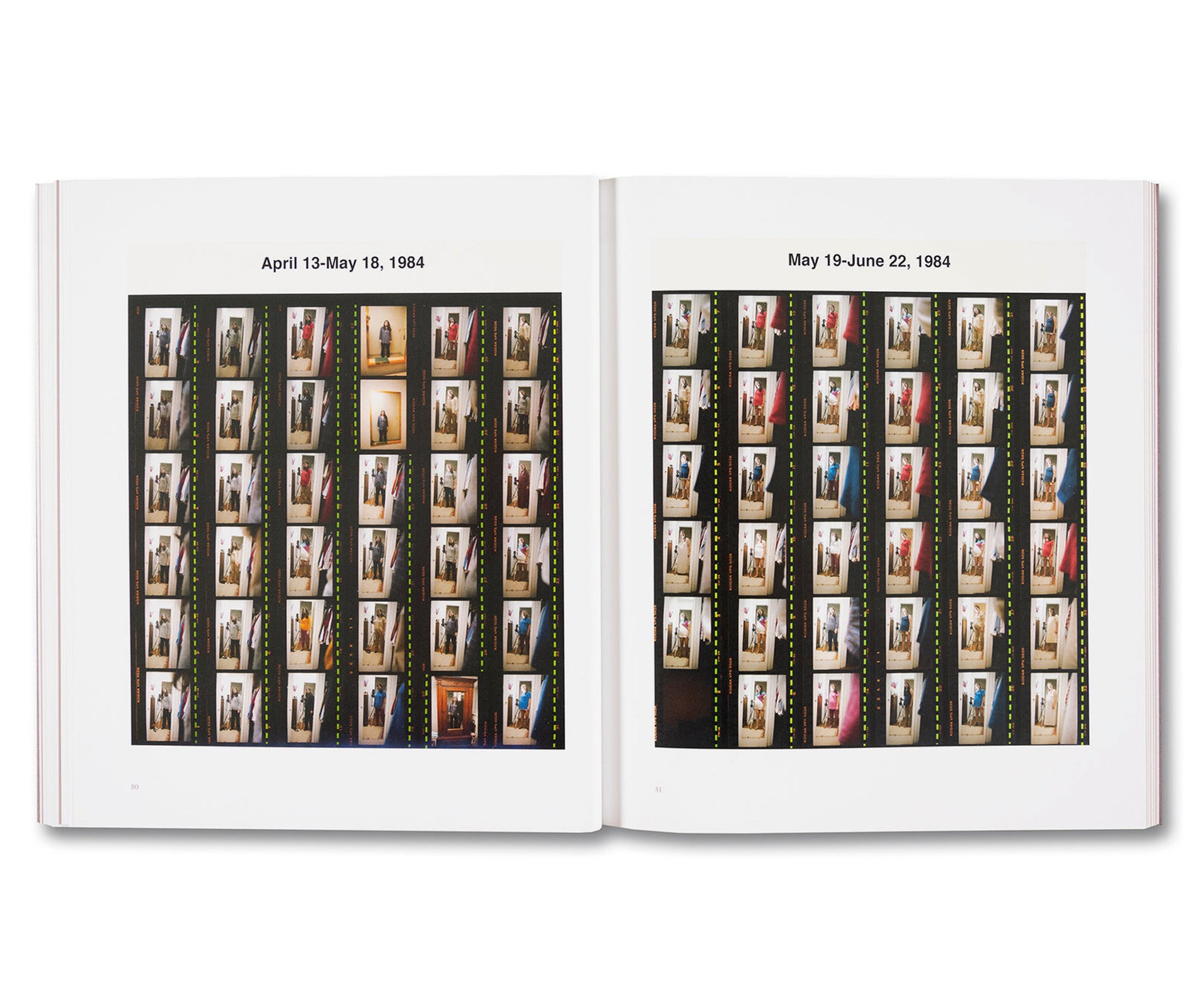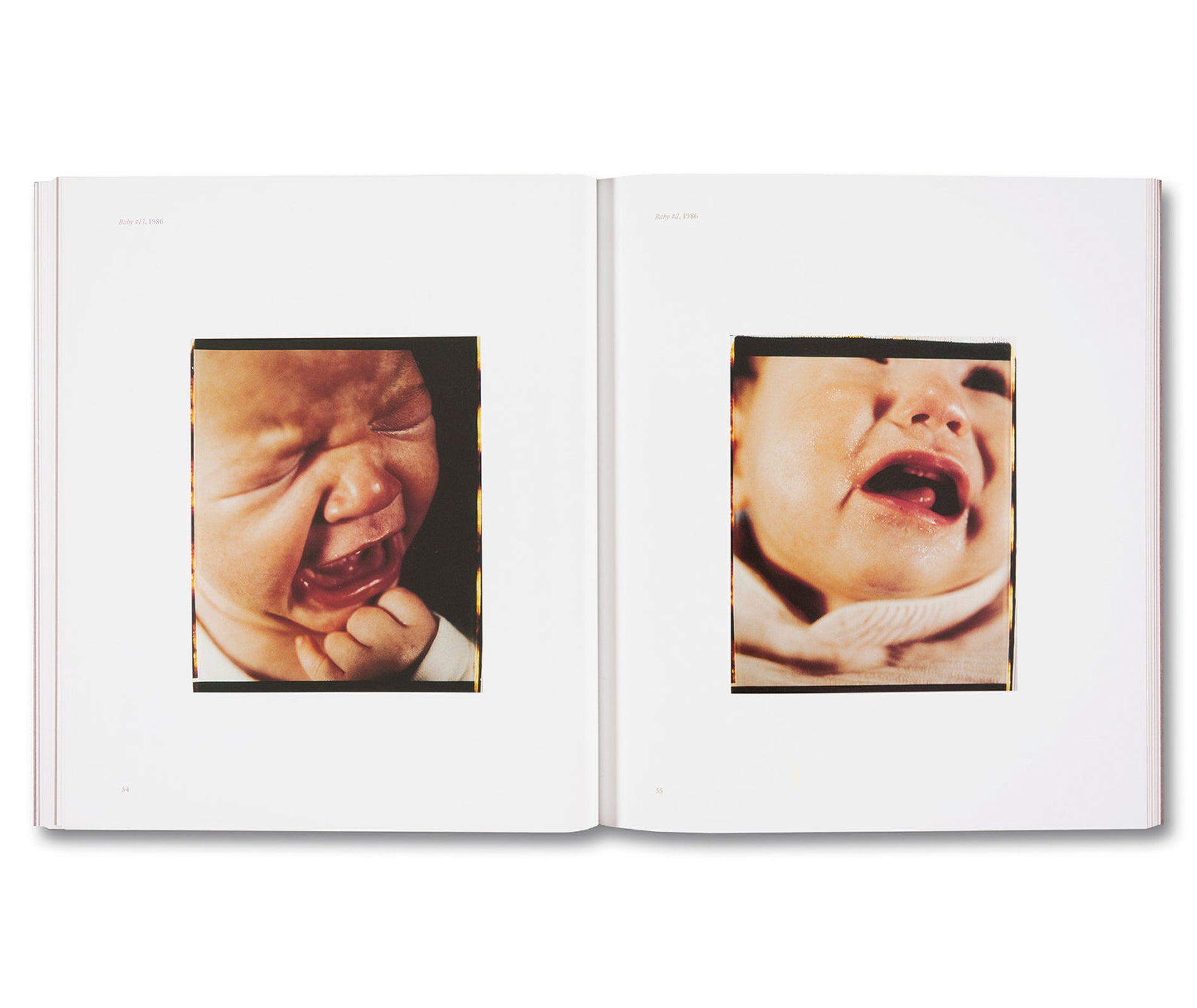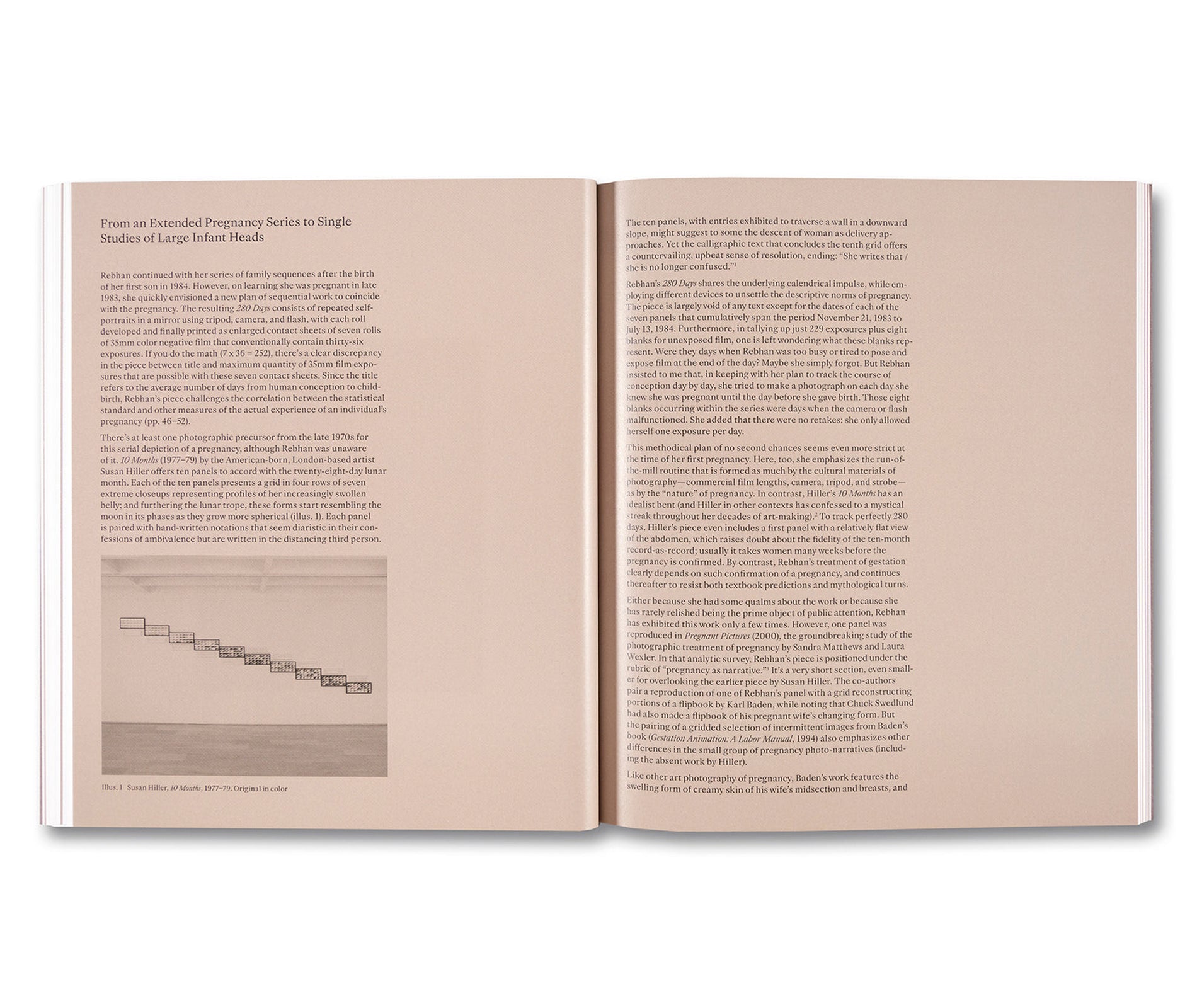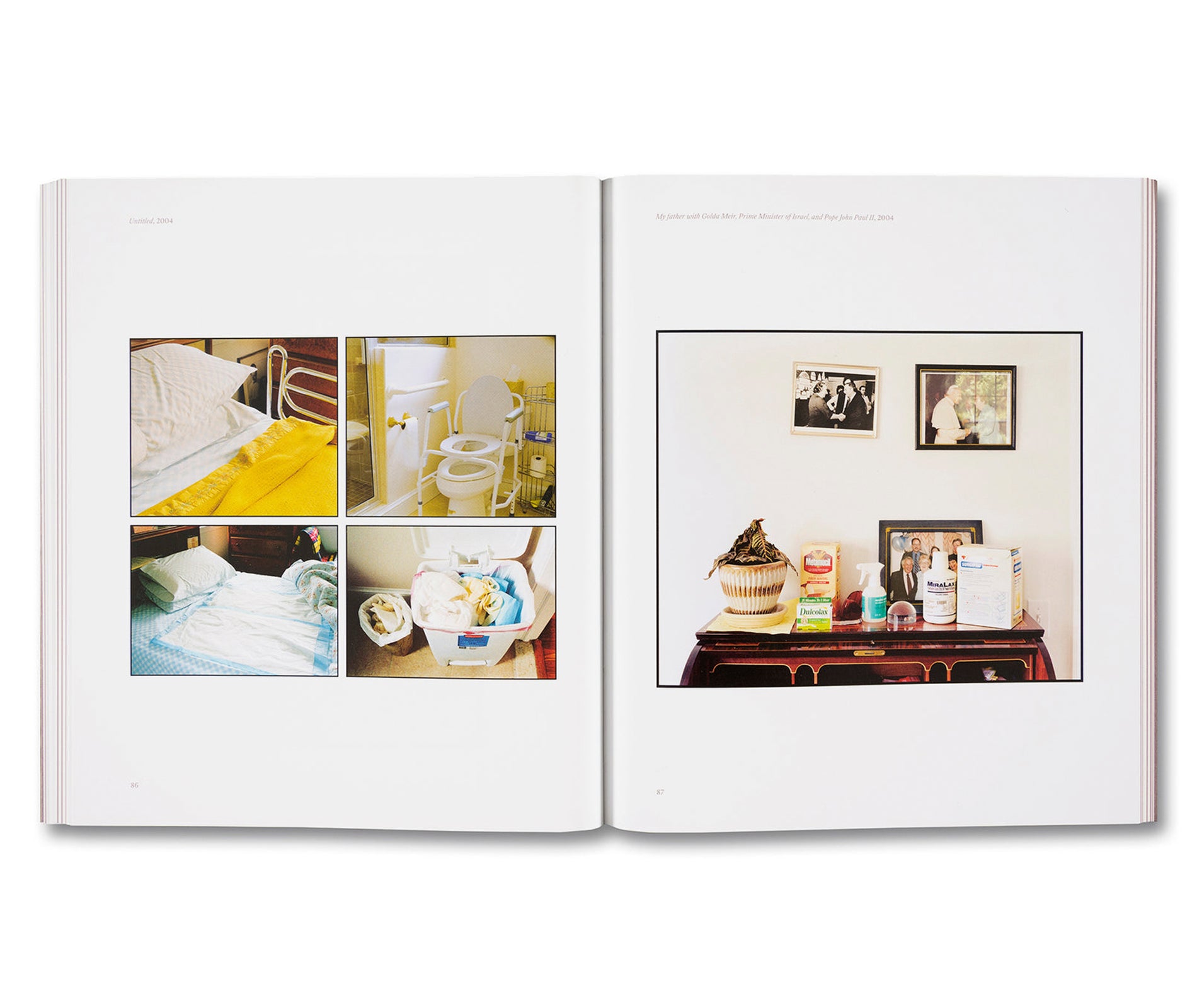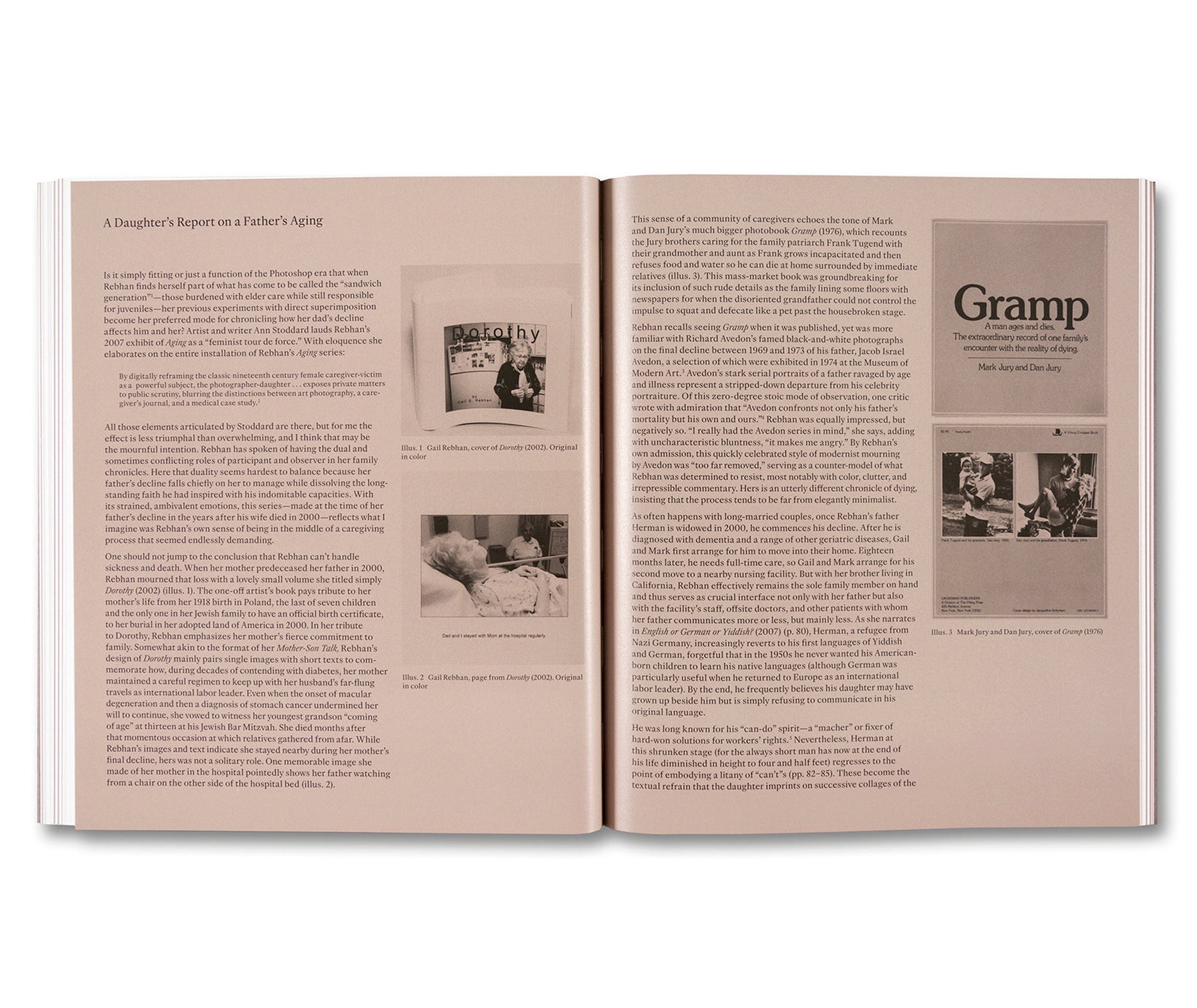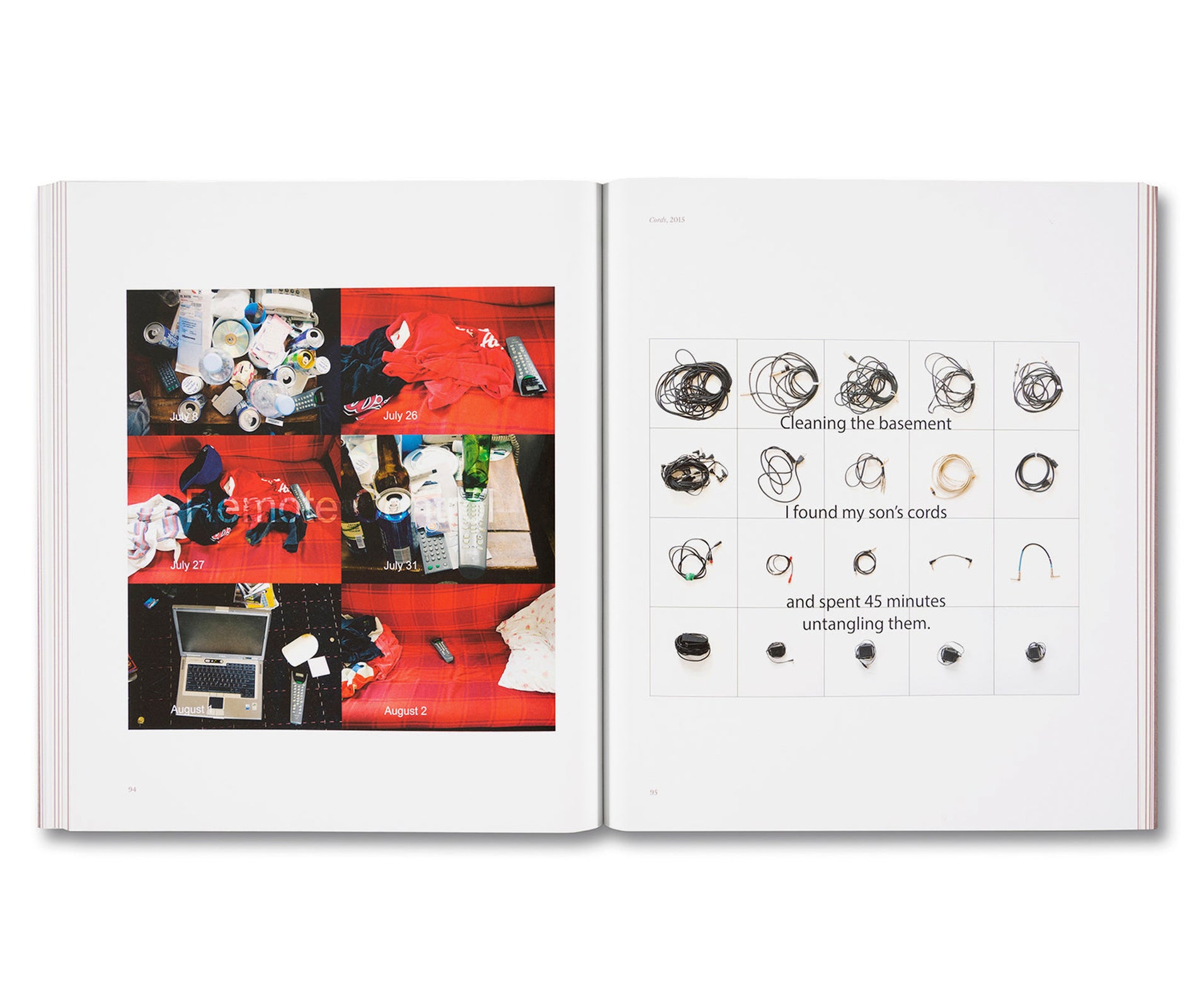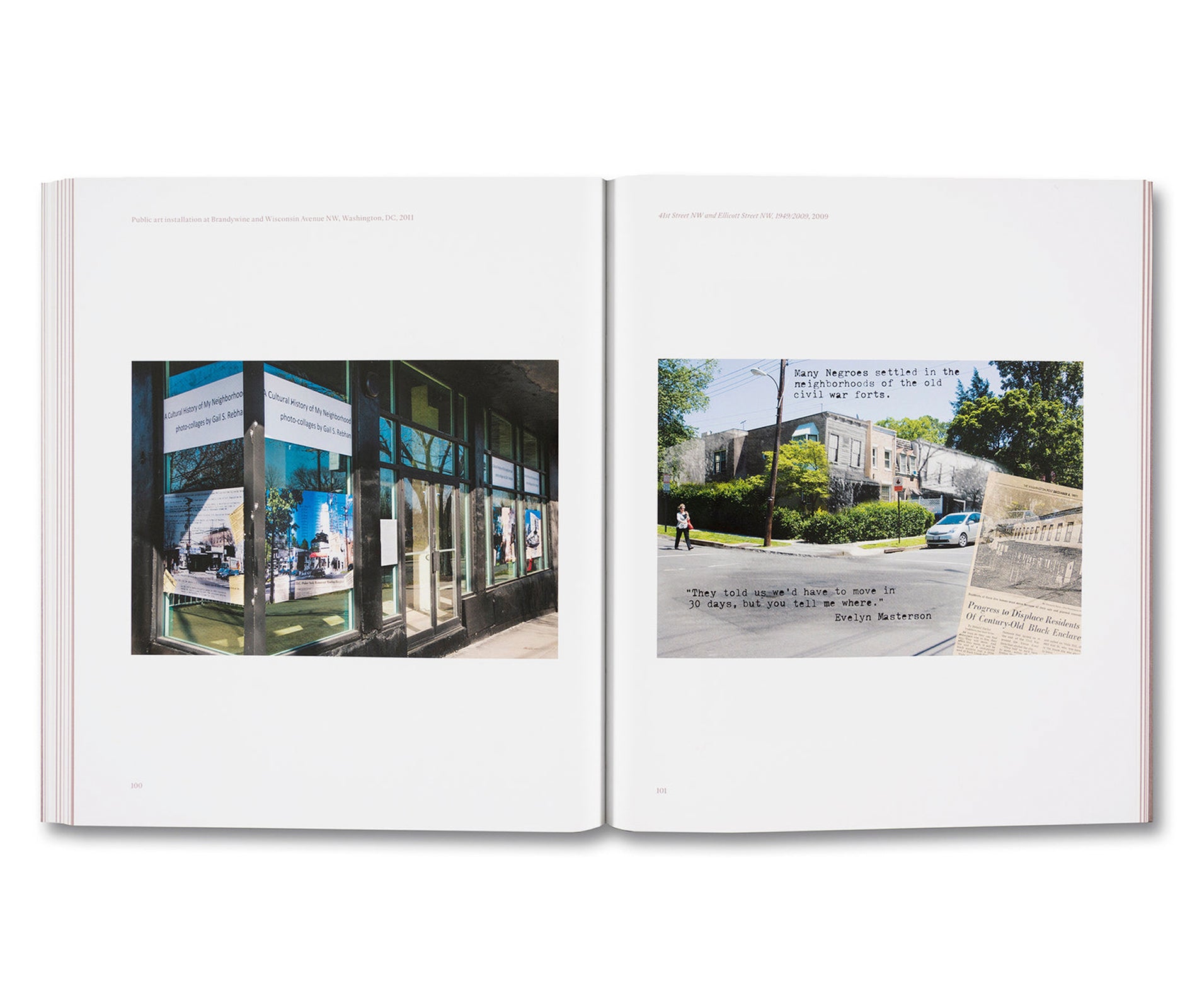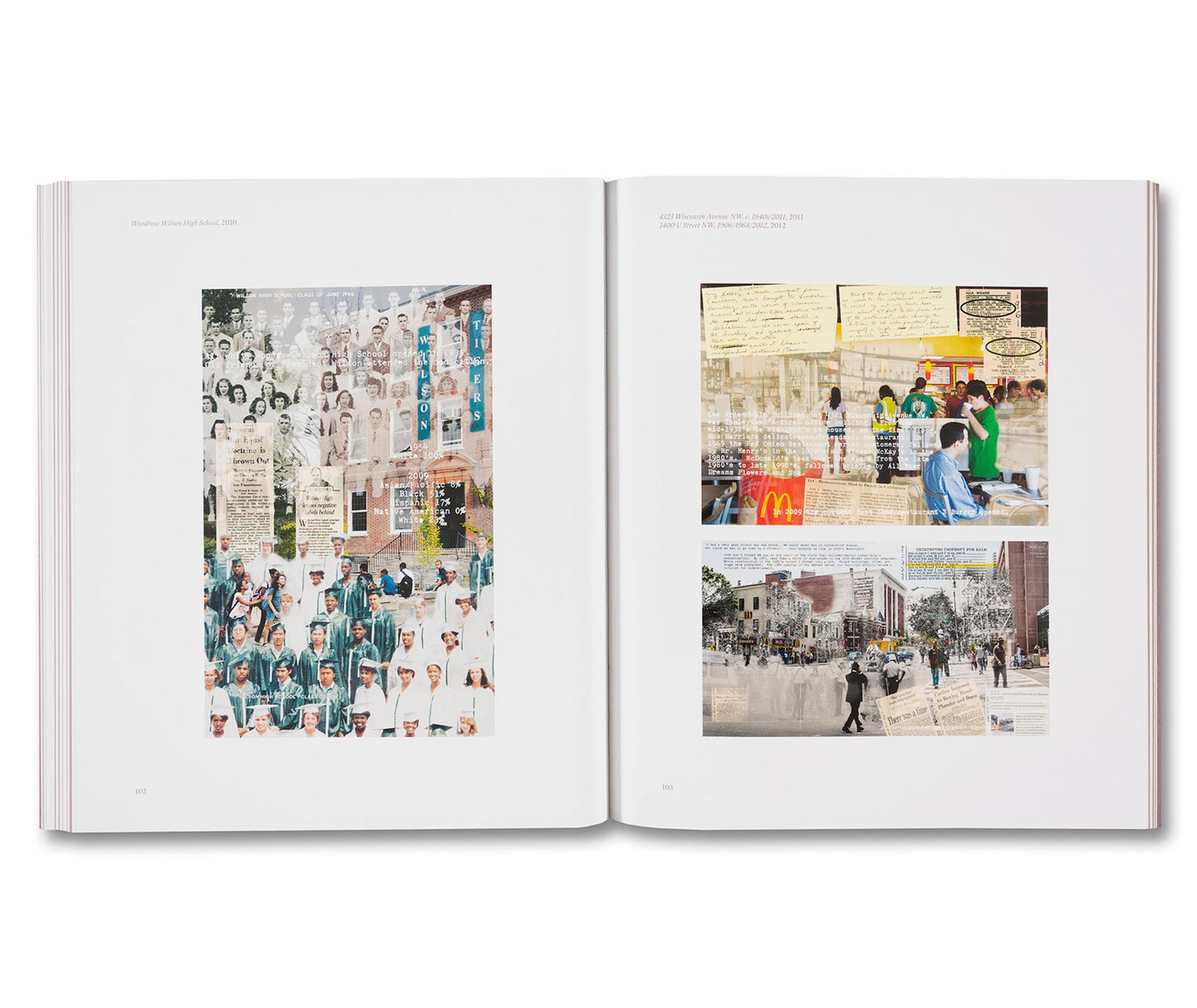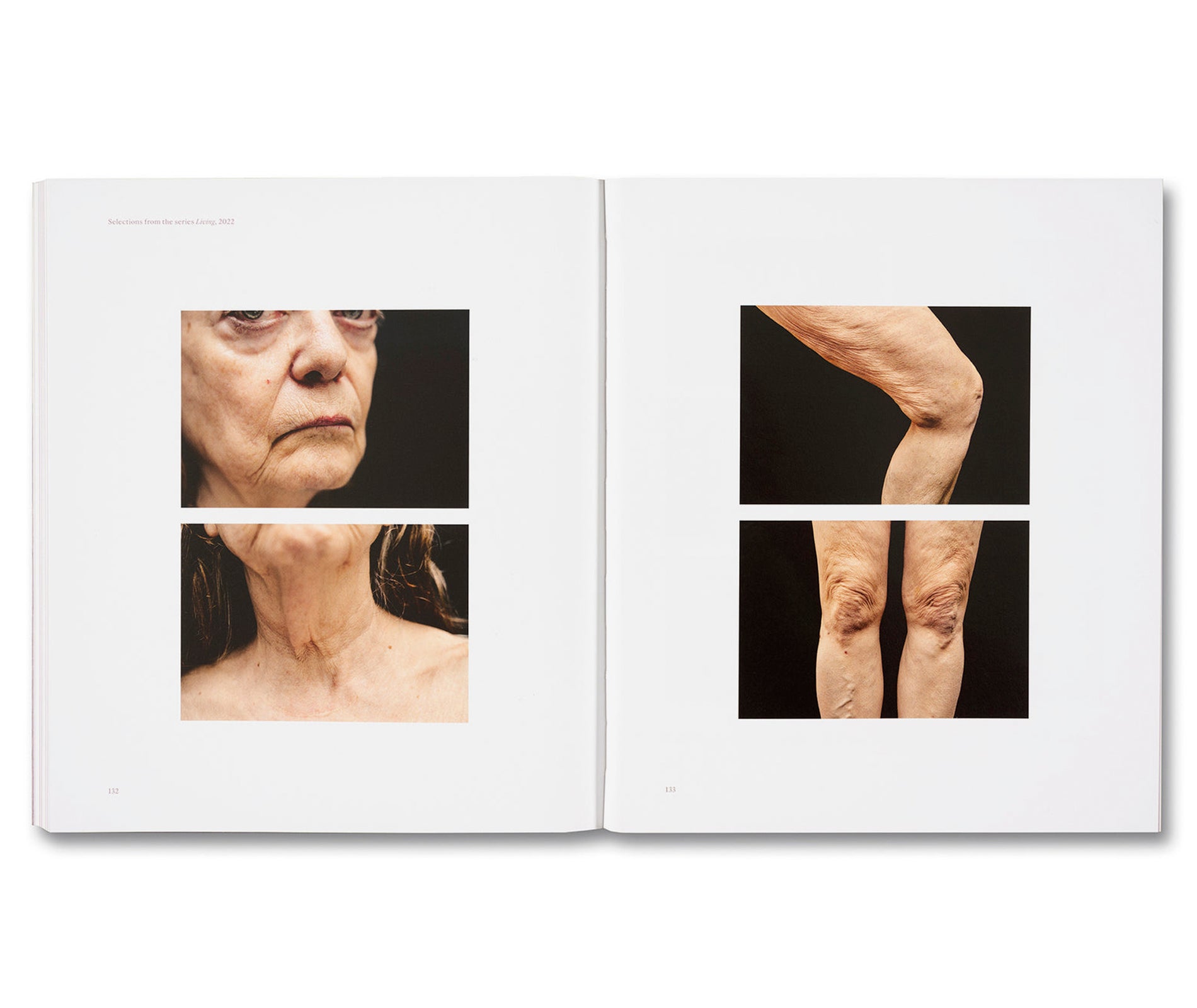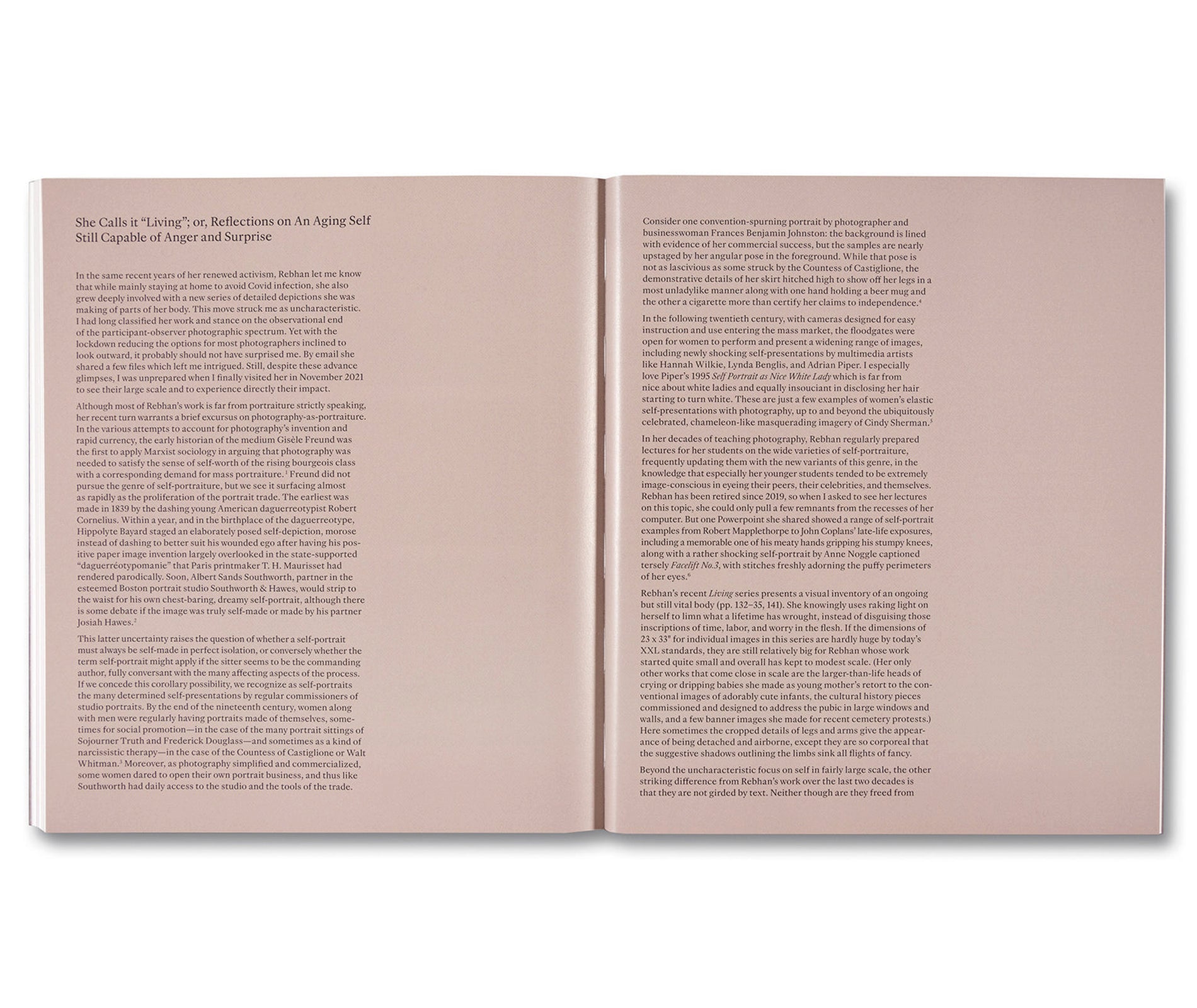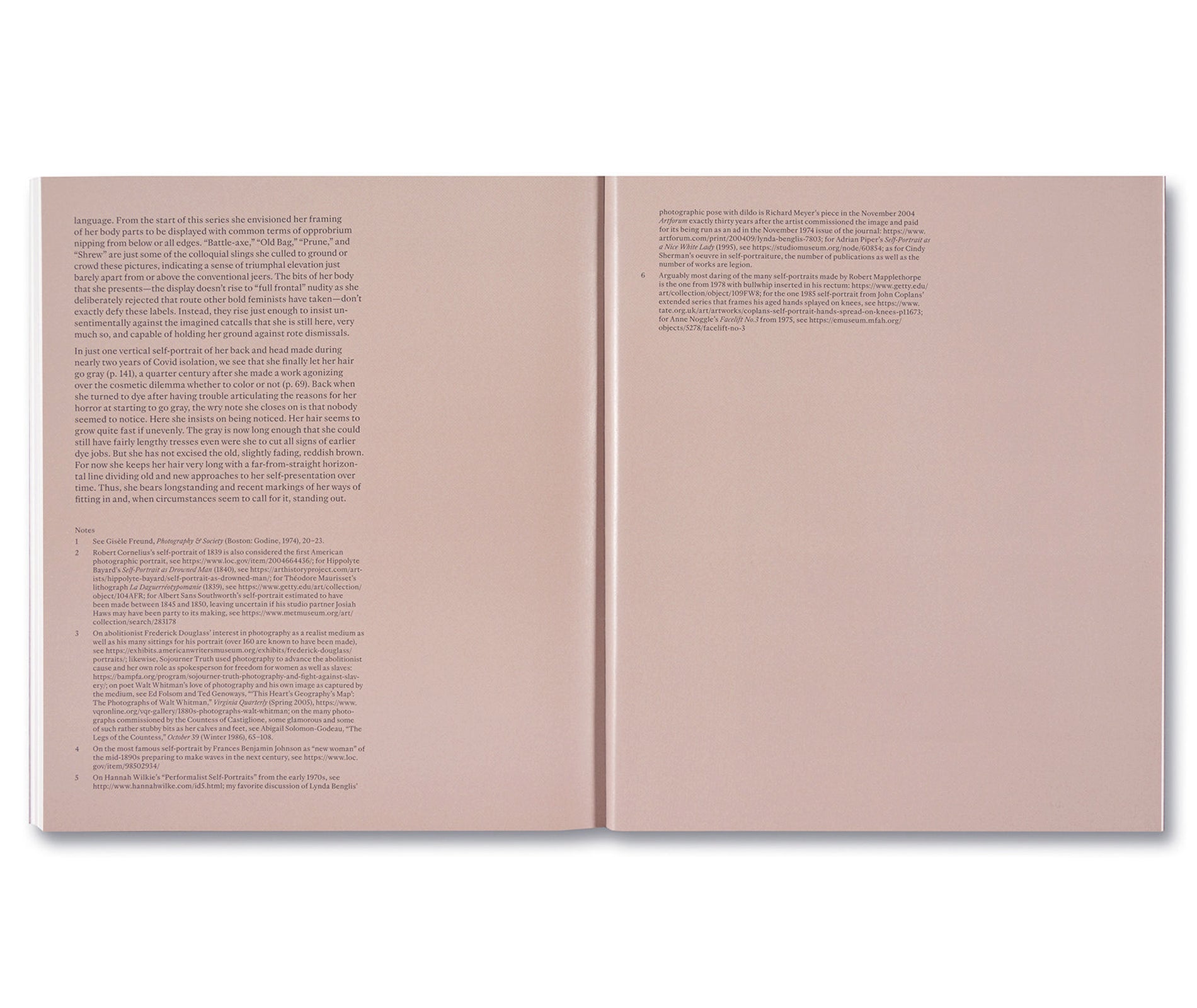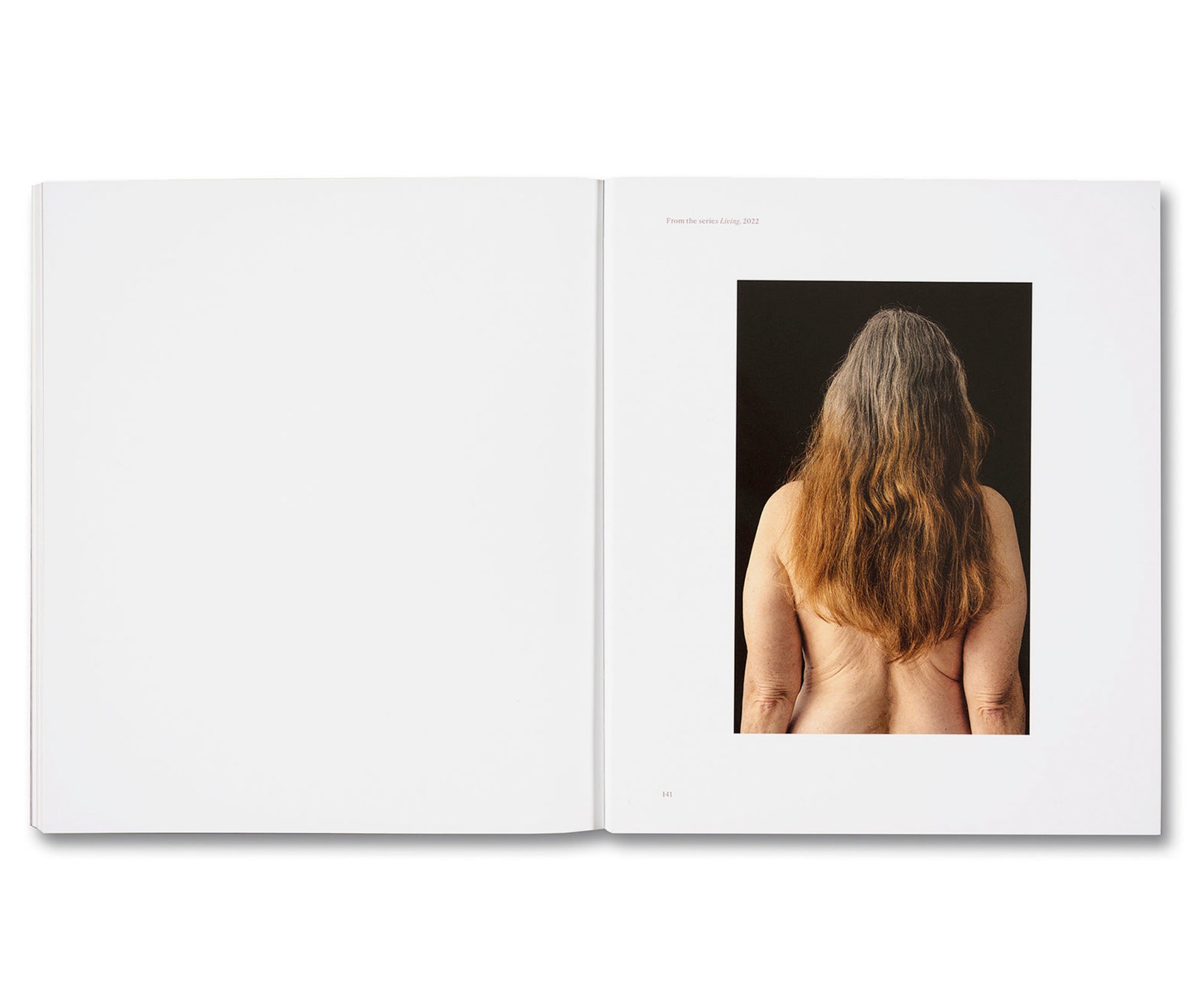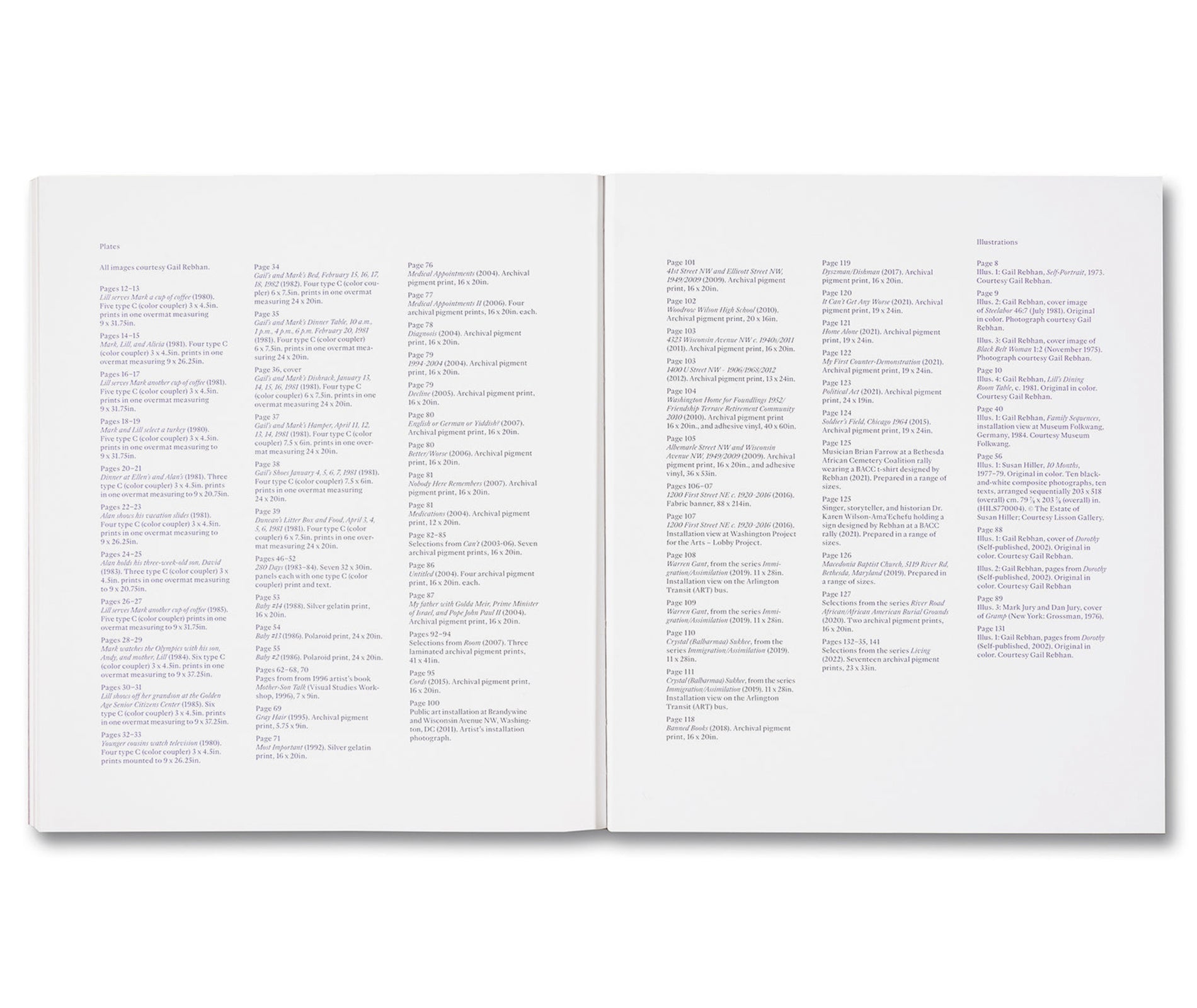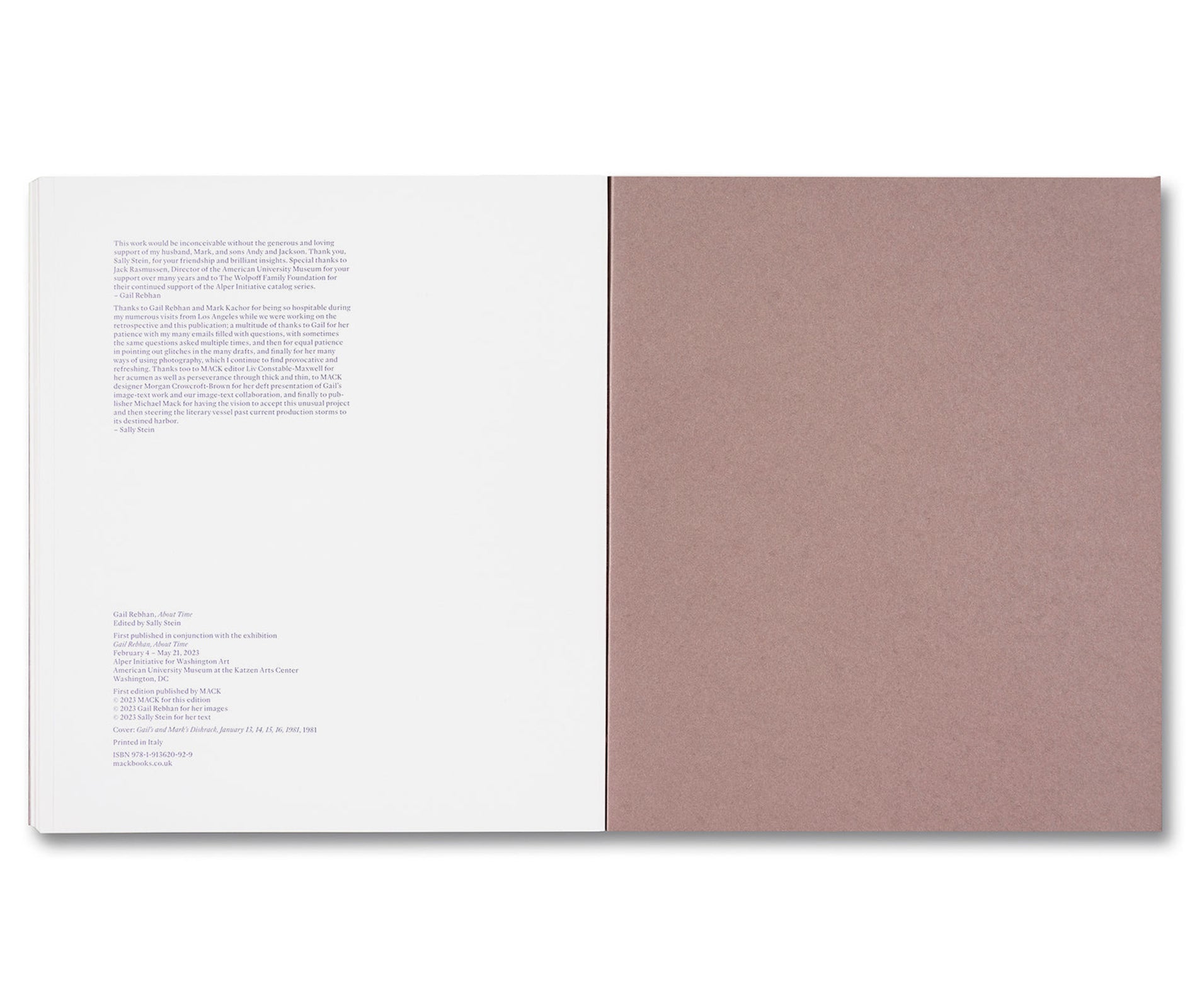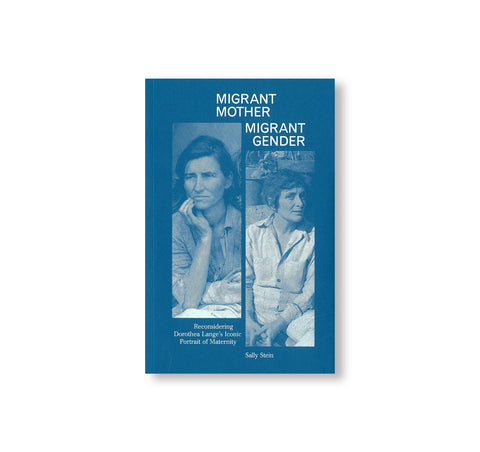GAIL REBHAN, ABOUT TIME by Gail Rebhan, Sally Stein
アメリカ人フォトグラファー、アーティストであるゲイル・レバン(Gail Rebhan)の作品集。本書はニューヨーク州ロチェスターで行われていた「ヴィジュアル・スタディーズ・ワークショップ(Visual Studies Workshop)」に基づいた一冊である。1980年代、初めてカリフォルニア大学アーバイン校名誉教授のサリー・スタイン(Sally Stein)博士とレバンはそこで出会い、フェミニズムと批評的な考察と観察、とりわけ特にコミック的な一面を持つトピックに対して似た関心を共有していることに気づき、その後数十年間、親しく交流を持った。スタインは写真史で教鞭を取りつつ文章も書き、レバンもまた教職につき、さまざまな形式でのイメージ制作を続けた。当時、その視覚的なステートメントにテキストは不可欠な要素となりつつあった。「アメリカン・ユニバーシティ・ミュージアム(American University Museum)」で回顧展をしないかと提案された時、レバンはスタインをゲスト・キュレーターとして招いた。
本書は、スタインの本質を突きながらもユーモラスな解説に導かれ、家庭生活の反復行動を捉えたスナップショットを用いた初期のシリーズから、故郷であるワシントン D.C.における不平等とジェントリフィケーションにまつわるより広範な考察まで、作者のユニークでアーティスティック、そして政治的な進歩を図解している。これらを締めくくる最新シリーズでは、女性が最も恐れるようになった時間が引き起こす痕跡を自身の体の変化でどう刻まれるのか観察したものである。鋭い洞察力、探究心、そして政治性が内在する作品の中で、作者は写真が持つ静寂や沈黙を否定し、連続性や変容を肯定している。その姿勢全てが、時間そのものこそレバンの永遠のミューズであるのだと示している。
The roots of this book lie in the Visual Studies Workshop, Rochester, NY, where Sally Stein and Gail Rebhan met in the 1980s, discovering their shared interests in feminism and critical modes of thinking and seeing – especially those that involved shades of the comic. They stayed in touch over the course of the intervening decades, Stein pursuing teaching and writing about the history of photography while Rebhan pursued teaching and image-making in various formats, with increasing recourse to text as an integral part of her graphic statements. When Rebhan was invited to show a retrospective at the American University Museum, she invited Stein to serve as guest curator.
Led by Stein’s insightful and often humorous commentary, this book charts Rebhan’s unique artistic and political progressions, from early works using serial snapshot photographs to track the repetitive actions of domestic life through to wider-reaching studies of gentrification and inequality her home city of Washington, DC. The publication culminates with her most recent series, which examines the ways her own body bears the marks of time that women especially have learned to fear. Among the incisive, inquisitive, and politically engaged work in this collection, Rebhan’s consistent rejection of photography’s affiliation with stillness and silence in favour of sequence and transformation reveals time itself as the artist’s perennial muse.

